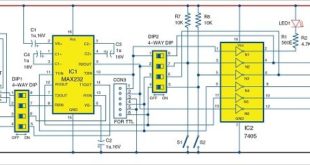As electronic devices using conventional materials reach their limits, research focus has shifted to the development of exotic materials with properties that can make electronic devices more efficient, lightweight, flexible, cost-effective and smart. Take a look at some promising candidates.
Most of us assume that smartphones and laptops will keep getting faster and better. But that progress could come to an end in about a decade. That’s when engineers will hit the limits of cramming atom-scale circuitry onto conventional silicon chips, the brains behind every computing device today.
Fortunately, chip market leaders have plenty of ideas to get around that impasse. Their plans begin with refinements to today’s technology and grow steadily more exotic.
Companies are investing big in exotic forms of carbon as a way to recraft chips. Graphene, for example, is a sheet of carbon atoms just a single atomic layer thick, arranged in a hexagonal array that looks like a chickenwire fencing. Another is carbon nanotubes, which are like tiny straws made from rolled up graphene sheets.
Both forms of carbon could help push miniaturisation further than what’s possible with conventional silicon. And processors could get faster even if they don’t get smaller—a big selling point. Nanotubes could become transistor building blocks, although placing them precisely is a big challenge. Researchers also envision tiny transistors made using graphene, but graphene-based chips will pose challenges. The material conducts electrical current well but doesn’t mirror silicon’s semiconductor properties.
One way to keep pushing progress will involve elements drawn from other columns to either side of the group IV column—thus the term III-V materials, pronounced simply ‘three-five.’ With III-V materials, chip manufacturing stays the same but silicon will get new elements layered on top. That will help electrons flow faster, which means less voltage will be needed to get them moving. If the chips need less power, transistors can be smaller and switch faster.
Researchers are creating and investigating artificial and unconventional materials with unusual electronic and magnetic properties like superconductors that transport electricity with zero losses, and very thin materials (just two or three atoms thick) that could be incorporated into transistors.
The novelty of such materials makes it nearly impossible to anticipate everything that they can do. A researcher can make educated guesses about various properties, but end up seeing something entirely different. A deeper understanding of the material opens the possibility that engineers would be able to route electric currents in quantum computers much like the way they do in conventional electronics through silicon. However, creating high-quality topological insulator materials is a challenge. Since the useful properties occur on the surface, nanoscale ribbons and plates would be ideal to work with because of their large surface area.
British researchers won the 2016 Nobel Prize in Physics for their theoretical explanations of strange states (topological phases) of matter in two-dimensional materials. Their work laid the foundation for predicting and explaining bizarre behaviours that experimentalists discovered at the surfaces of materials, and inside extremely thin layers. These include superconductivity—the ability to conduct electricity without resistance—and magnetism in very thin materials.
Physicists are now exploring similar states of matter for potential use in a new generation of electronics including quantum computers. And the theories pioneered by the Nobel winners have been extended to develop exciting materials such as topological insulators.
Topological insulators
Topological insulators are a class of solids that conduct electricity like a metal across their surface but at the same time block the current’s flow like a rubber through their interior. Theoretical physicists predicted their existence in 2006 and experimentalists demonstrated the first such material in 2008.
Engineers find a few traits of topological insulators especially exciting. One is that the electrons move in a direction determined by their spin—a quantum-mechanical property that forms the basis of magnetic data storage. Engineers hope to exploit the spin-motion connection to make superfast hard drives.
Topological insulators open the door to tailoring topological electronic properties by stacking different thin sheets, or 2D materials. These exotic 2D materials could be used as a platform for energy-efficient computing (spintronics) and to solve today’s intractable challenges with quantum computing.
Candidate materials for topological insulators
Tungsten ditelluride
Like graphene, the semi-metal tungsten ditelluride (WTe2) can be prepared in a single monolayer. Tellurium atoms sandwich the transition metal tungsten in each layer. These sandwiched transition metal materials are important for future electronics and photonics. Scientists have predicted that WTe2 in monolayer form has the exotic electronic properties of topological insulators. However, the surface of WTe2 oxidises in air, destroying the electronic properties.
Now, researchers have made devices from WTe2 down to a single layer thick, which are air-stable and have good electrical contacts. Surprisingly, they found that in the case of a single layer, the sheet became insulating at liquid nitrogen temperatures when no gate voltage was applied. For large-enough positive or negative contact voltages, the electrical current switched on, as in a transistor.
Electronics of Exotic Materials
Dr S.S. Verma is a professor at Department of Physics, Sant Longowal Institute of Engineering and Technology, Sangrur, Punjab
This content was originally published here.








